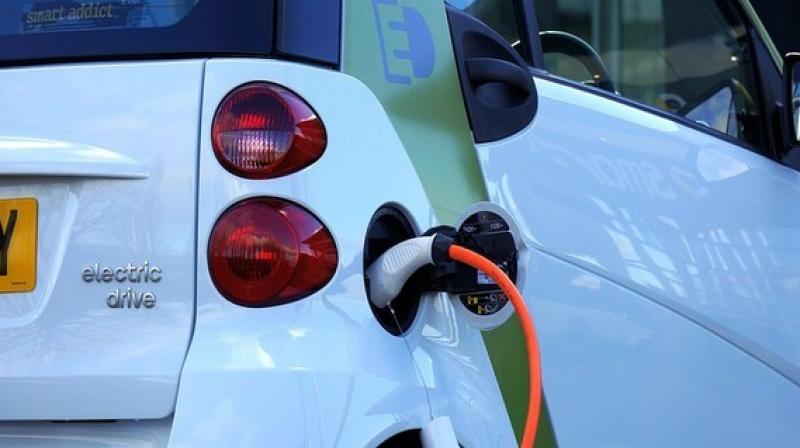Electric vehicle can impact climate change

Washington: is it possible for electric vehicles to improve air quality and climate outlook? Recent research has thrown light on the efficacy of electric vehicles.
The study published in the journal Atmospheric Environment provided evidence that making a switch to electric vehicles would improve overall air quality and lower carbon emissions. The study quantified the differences in air pollution generated from battery-powered electric vehicles versus internal combustion engines.
The researchers found that even when their electricity is generated from combustion sources, electric vehicles have a net positive impact on air quality and climate change.
"In contrast to many of the scary climate change impact stories we read in the news, this work is about solutions," said Daniel Horton, senior author of the study.
"We know that climate change is happening, so what can we do about it? One technologically available solution is to electrify our transportation system. We find that electric vehicle adoption reduces net carbon emissions and has the added benefit of reducing air pollutants, thereby improving public health,” added Horton.
To quantify the differences between the two types of vehicles, the researchers used emissions remapping algorithm and air quality model simulations.
They used these methods to closely examine two pollutants related to automobiles and power emissions: ozone and particulate matter. Both are main components of smog and can trigger a variety of health problems, such as asthma, emphysema and chronic bronchitis.
To fully account for the complexity of changes to air pollution chemistry, the researchers took multiple variables into consideration including potential electric vehicles adoption rates, Generation of electric vehicle power supply, including our current combustion-dominant mix, combustion-only sources and enhanced emission-free renewable, geographical locations, and seasons and times of the day.
Ozone levels decreased across the board in simulations of warmer weather months. In the wintertime, however, ozone levels increase slightly but are already much lower compared to summer due to a chemical reaction that occurs differently during times of lesser winter sunlight.
"Across scenarios, we found the more cars that transitioned to electric power, the better for summertime ozone levels," said Jordan Schnell, first author of the study. "No matter how the power is generated, the more combustion cars you take off the road, the better the ozone quality,” Schnell added.
Particulate matter, which is also called ‘haze’, decreased in the wintertime but showed greater variation based on location and how the power was generated. Locations with more coal-fired power in their energy mix, for example, experienced an increase in haze during the summer. Locations with clean energy sources, however, saw drastic reductions in the human-caused haze.
"We found that in the Midwest, the increased power demands of electric vehicle charging in our current energy mix could cause slight increases in summer particulate matter due to the reliance on coal-fired power generation," Schnell said.
"However, if we transit more of the Midwest's power generation to renewables, particulate matter pollution is substantially reduced. In the Pacific Northwestern or Northeast, where there is already more clean power available, EV adoption, even with the current energy mix, will decrease particulate matter pollution."

